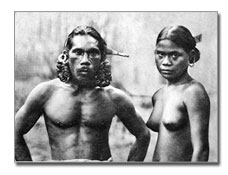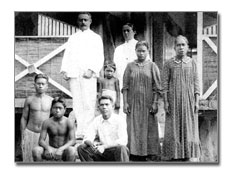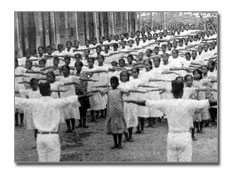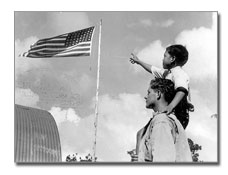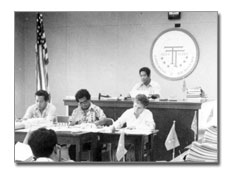| Watch Now! | More Info |
| HOME | ABOUT MICSEM | PUBLICATIONS | VIDEOTAPES | LIBRARY | FORUM | PHOTOS | SEARCH |

|
First Contact to 1885. This segment begins with the early settlement of the islands. It goes on to illustrate the impact of those who came from Europe and the US: early Spanish explorers and priests, British indiaman traders, whalers, beachcombers, missionaries, and copra traders. It examines their contribution, both positive and negative, to island life today.
|
|
1885-1920. The video opens in 1885 with the contest between Spain and Germany for possession of the islands. Offering a brief look at Spanish rule, the video explores German development programs, especially in Yap and Palau, and their impact on island life. It highlights the Sokehs uprising on Pohnpei and concludes with the takeover by Japan.
| Watch Now! | More Info | |
|
1920-1940. This segment offers a look at the �golden years� under Japanese rule. It shows the rise of the sugar industry on Saipan, the expansion of commercial agriculture and fishing in Palau and Chuuk, and the impact of public education on the population. It traces the rise of the large towns, concluding with the growing spirit of Japanese nationalism prior to the war.
| Watch Now! | More Info | |
|
1940-1960. The first part of this video documents the preparations for war and the assault by the Allies on the islands, not just as they affected the outcome of the war but as they touched the lives of Micronesians. It traces the outlines of the reconstruction of the islands under the US Navy and Interior Department, but shows the military uses to which the islands were put once again.
| Watch Now! | More Info |
|
|
1960-1980. This final segment surveys the changes in US administration policies that began with President Kennedy with a focus on improvement of education and health services. The list of government employees expanded, along with the population of the towns. The Congress of Micronesia offered new leadership roles and a vision of full self-government, but also revealed the fissures in an area that had been unified for a century under foreign rule.
| Watch Now! | More Info |
|
